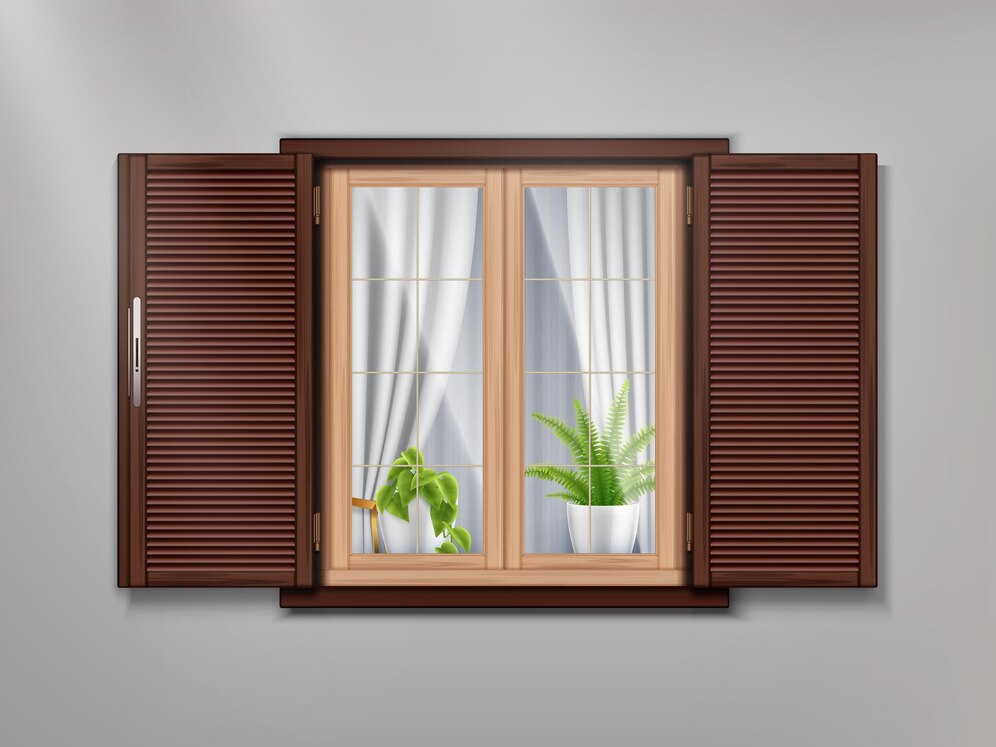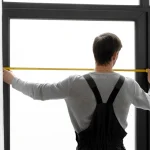Windows are more than just openings in a wall; they are a reflection of the era in which they were created. Their design and materials tell a story about the society and technology of the time. As we explore the history of window styles, we can appreciate how advancements in architecture and glassmaking have shaped our living spaces.
Early Beginnings: Small and Functional
In ancient times, windows were small openings in walls meant to let in light and air. These early windows were often just holes covered with animal skins or cloth. In Roman times, the use of glass for windows began, but it was still limited to the wealthiest homes and public buildings.
Roman Influence
Romans were among the first to use glass in windows. They created small panes set into stone or wooden frames. These early glass windows were not clear but provided some protection from the elements while allowing light to enter. As Stephen Ellis, an architectural historian, notes, “Windows are more than just openings in a wall; they are a reflection of the era in which they were created.”
Medieval Marvels: Leaded Panes
During the medieval period, windows became more common in buildings. The invention of leaded glass panes allowed for more intricate designs. Small pieces of glass were joined with lead strips to create larger windows. These were often seen in churches and castles, adding beauty and functionality.
Gothic Grandeur
The Gothic era brought about the development of larger and more elaborate windows. Stained glass became popular, with intricate designs depicting religious scenes. These windows were not only functional but also works of art, transforming light into colorful displays within the grand cathedrals.
Judith Gelfand, a curator of decorative arts, explains, “The evolution of window styles is closely tied to advancements in glassmaking and architectural design. From the small, leaded panes of medieval times to the large, energy-efficient windows of today, we see a progression of both form and function.”
Renaissance Rebirth: Symmetry and Proportion
The Renaissance period saw a shift towards symmetry and proportion in architecture. Windows became larger and more regular in shape, reflecting the era’s emphasis on balance and harmony. This period also saw the introduction of sash windows, which allowed for better ventilation and ease of use.
The Advent of Sash Windows
Sash windows, consisting of two framed panes that slide vertically, were a significant innovation. They provided better control over ventilation and were easier to clean and maintain. This style became popular in Europe and remains a classic window style today.
Mark Rosenbaum, an architectural historian, highlights the importance of windows in shaping interior spaces: “Windows has played a vital role in shaping interior spaces. Their size, placement, and design have influenced how rooms are used and how people interact with the natural world.”
Victorian Elegance: Variety and Decoration
The Victorian era brought a love for decoration and variety in window styles. Advances in glassmaking allowed for larger panes and more intricate designs. Bay windows, with their multiple facets, became popular, adding space and light to rooms.
Stained Glass Revival
Victorian homes often featured stained glass windows, not just in churches but in private homes. These windows added color and character, reflecting the homeowner’s taste and status. Decorative patterns and motifs became a hallmark of this period.
Jennifer Ebert, a home improvement expert, emphasizes the timeless beauty of traditional window styles: “While modern windows offer superior energy efficiency and performance, there’s a timeless beauty in traditional window styles. Understanding the history of windows can help homeowners choose the right style for their home.”
Modern Marvels: Functionality and Efficiency
The 20th century brought significant changes in window technology. With the advent of new materials and construction methods, windows became more functional and energy-efficient. Double glazing, thermal insulation, and innovative designs improved comfort and reduced energy consumption.
Post-War Innovation
After World War II, there was a surge in technological advancements in window design. Aluminum and PVC frames became popular, offering durability and low maintenance. The introduction of double-glazed windows provided better insulation and noise reduction.
David Gissen, an architectural critic, highlights the impact of window design on a building’s performance: “Windows are a key element in the relationship between a building and its environment. Their design and placement can significantly impact a building’s energy performance, daylighting, and overall aesthetic.”
Contemporary Trends: Sustainability and Style
Today’s window designs focus on sustainability and style. Energy-efficient windows with low-E coatings and triple glazing are becoming standard in new constructions. Homeowners are also seeking designs that enhance natural light and offer unobstructed views.
Smart Windows
One of the latest innovations is the development of smart windows, which can adjust their transparency based on the amount of sunlight. These windows help regulate indoor temperatures and reduce the need for artificial lighting, contributing to energy savings.
Rosemarie Rossetti, president of the Roofers Guild, emphasizes the importance of window materials: “While often overlooked, the frame and materials used in window construction are crucial for its longevity and performance. Understanding the history of window materials can help homeowners make informed decisions about window replacements.”
Unique Insights: The Role of Windows
Windows do more than provide light and air; they shape our living environments. The placement and design of windows can influence how we use a space, our connection to the outdoors, and even our mood. Large, unobstructed windows can create a sense of openness and freedom, while smaller, strategically placed windows can offer privacy and coziness.
Expert Advice on Window Styles
- Stephen Ellis, architectural historian: “Windows are more than just openings in a wall; they are a reflection of the era in which they were created. Their design and materials tell a story about the society and technology of the time.”
- Judith Gelfand, curator of decorative arts: “The evolution of window styles is closely tied to advancements in glassmaking and architectural design. From the small, leaded panes of medieval times to the large, energy-efficient windows of today, we see a progression of both form and function.”
- Mark Rosenbaum, architectural historian: “Windows have played a vital role in shaping interior spaces. Their size, placement, and design have influenced how rooms are used and how people interact with the natural world.”
- Jennifer Ebert, home improvement expert: “While modern windows offer superior energy efficiency and performance, there’s a timeless beauty in traditional window styles. Understanding the history of windows can help homeowners choose the right style for their home.”
- David Gissen, architectural critic: “Windows are a key element in the relationship between a building and its environment. Their design and placement can significantly impact a building’s energy performance, daylighting, and overall aesthetic.”
- Rosemarie Rossetti, president of the Roofers Guild: “While often overlooked, the frame and materials used in window construction are crucial for its longevity and performance. Understanding the history of window materials can help homeowners make informed decisions about window replacements.”
Studies and Resources
- National Park Service (NPS) Architectural Resources: The NPS has extensive resources on historic preservation, including information on window styles and materials. Their studies can provide valuable insights into the evolution of window design.
- The Victorian Society: This organization focuses on preserving Victorian architecture and heritage. Their research on Victorian windows can offer detailed information on window styles popular during this era.
- Department of Energy (DOE): The DOE conducts research on energy efficiency in buildings, including studies on window technology and performance. Their findings can inform homeowners about the latest advancements in window design and materials.
- National Fenestration Rating Council (NFRC): The NFRC develops and maintains energy performance standards for windows, doors, skylights, and other fenestration products. Their research can provide data on the energy efficiency of different window styles and materials.
Conclusion
Windows have come a long way from simple openings to advanced, energy-efficient designs. By understanding the history of window styles, homeowners can make informed choices that enhance their home’s comfort, energy efficiency, and aesthetic appeal. Whether you prefer the charm of traditional styles or the functionality of modern designs, windows play a crucial role in shaping our living spaces. As you consider your options, remember the stories and advancements that have brought us the windows we enjoy today.









